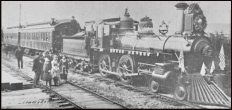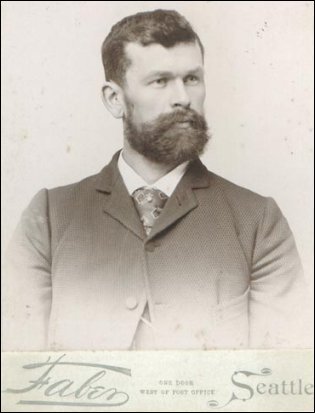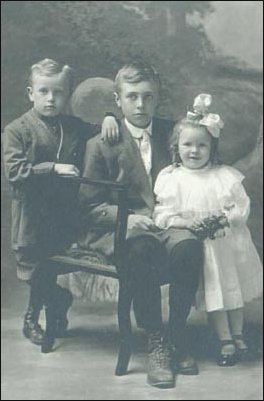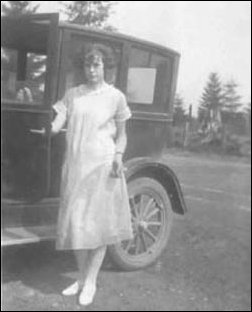Skagit River Journal
Free Resources Stories & Photos

|
|
Skagit River JournalFree Resources Stories & Photos |

|
 |
| "But the climax arrived and every girl in the room turned fairly green with envy, when Silas Butler as George Waterman and J.T. Squires as Philip Bradley, the Spy, bade poor Maud [Bradley, the spy's sister] a tearful farewell and kissed her and she fell to the floor in a swoon." |
However, before the building of the railroad there had been a small settlement near Bow, known locally as Brownsville. It resulted from the building of a saw-mill on the Brown place in 1892 by the Howard-Butler Company, and the erection the same year of a school-house nearby. Several logging camps in the surrounding region contributed to the stability of the settlement, and gradually the number of ranch men in the district increased. The post office did not come until July, 1901, or until after the railroad had been assured, and the service did not commence until just one year later, when. The post office and station were named Bow, at the suggestion of Mr. Brown, after the great Bow railroad station of London, England. The same year the post office was opened Ben Gardner built the Bow hotel, first known as the Gardner house. The next spring, McDougall & Brown built a saloon and that summer W. Nelson Crenshaw established the Bow department store in a shake house. At that time, also, the Winner Shingle Company built a shingle mill on the Brown farm, thus giving the town proper its first industry.Ray Jordan, in his book Ray's Writin's, provides more background, including Butler's first contribution to local schools:
During 1892, Howard and Butler built a sawmill on the Brown homestead. A small settlement naturally called Brownsville?? mushroomed around the new operation. A substantial new school was erected the same year. Previous to this, the Brownsville children had attended a school of sorts in Howard and Butler's old mill office, in the Jake Harding home?? and in a small school building, taught for some time by Woodman (Granny) Matthews, located on Edison Slough between the present Chuckanut Highway and Edison.In another story in the 1892 Phonograph, issue, , we find that the main entertainment in town that Christmas was a play at the Odd Fellow hall called The Confederate Spy. Edward Howard played a Johnny Reb officer. But the showstopper piece featured our young hero:
. . . Miss Emma Ewing as Norah McLeggin and Peter Kling as Officer Mulberry joked and badgered each other and Mulgarry went strutting off the stage with Norah on his arm, every man jack of the big crowd of fellows present looked lonesome and wistful and wondered why it couldn't have been them. But the climax arrived and every girl in the room turned fairly green with envy, when Silas Butler as George Waterman and J.T. Squires as Philip Bradley, the Spy, bade poor Maud [Bradley, the spy's sister] a tearful farewell and kissed her and she fell to the floor in a swoon. Six of the Tillacums from Malsberger's camp shivered all over and one of them said "cheeses," and the general sentiment among the loggers was that the reputation of Silas and J.T. as extremely innocent and altogether proper bachelors, was entirely gone, that both of them had kissed somebody's sister before. The discovery made such a sensation among the boys as to cause The Phonograph to distrust its own judgment and seek that of others.Back in those days a play reviewer had the liberty to interview members of the audience about their reactions to the play and we find in those comments that Silas was rubbing shoulders with many pioneers who would leave a mark on the county: Dave Donnelly, the pioneer butcher and Republican politician of Woolley and the Who's Who of Edison: a judge, Hon. F.E. Gilkey; Thomas Cain, owner of Edison's first saloon; Fletcher Conn, Patrick McCoy and the smashing Miss Lizzie Quickenden, "beautifully draped and crowned, made a picture which will be long remembered by the Edisonites. McCoy would later marry one of Silas's sisters, Gertrude. Another sister, Minerva, also joined them and she married another friend of Silas, Will Gilmore of Edison.
 |
Silas has gone to Bellingham. Raymond is having 12 acres of hill land just above the barn picked off of small stuff and is going to fence it in for a hog pasture. One of our work horses died last week. Didn't make anything last year, Silas's share of the dividends was $103.73 while our expenses family were over $2,500, so you see the mill business was not a paying proposition last year. I think I'll go into the chicken business and see if I can make a living that way.Many families who depended on logging soon went downhill as timber in accessible locations played out or when a glut on the market drove down prices. As you will see from the accompanying stories, the Butlers showed how successful pioneer families learned to adapt. By the 1920s, Silas was already becoming famous as a dairyman and he would soon be a leading administrator for the dairymen's association of the county. Gertrude recalled that the mill business was cut short by 1917. The mill burned in a fire in 1929.
|
|
|||||
|
|
|
|||
|
Far left: Belleville School, November 1922, Fred Butler, top row, 4th from left, in the 8th grade.. Center: Fred, Mose (Maurice) and Queenie the St. Bernard, 1916. The photo is captioned "Preparedness.". Right: The Butler farm forms over the stump ranch, looking southwest, circa 1920s. |
|||||
 |
| Caption from the scrapbook of this photo of a young Gertrude beside the family car — "The Overland 1927" Fred turned a corner too fast and turned it over. Mel Hines's head went through the roof. 3 Sedro boys came by and helped them turn it over. Silas, when he found out, said "well, now we'll all walk," but bought another Overland instead. Burlington graduate Mel Hines went on to have an even greater football career than that of Roland Kirkby, starring in the National Football League. |
|
|
|
We hope that someone can help us interpret the loggers' terms in the song. We know that "bejabers" was a variant of the oath "By Jesus."
|
Please report any broken links or files that do not open and we will send you the correct link. Thank you. |
|
Oliver Hammer Clothes Shop at 817 Metcalf street in downtown Sedro-Woolley, 82 years Bus Jungquist Furniture at 829 Metcalf street in downtown Sedro-Woolley, 36 years Peace and quiet at the Alpine RV Park, just north of Marblemount on Hwy 20 Park your RV or pitch a tent by the Skagit river, just a short driver from Winthrop or Sedro-Woolley College Way Antique Mall, 1601 E. College Way, Mount Vernon, WA 98273, (360) 848-0807 Where you will find wonderful examples of Skagit county's past, seven days a week North Cascade Ford, formerly Vern Sims Ford Ranch, West Ferry street and Crossroads/Highway 20 either on the Sedro-Woolley page or directly at www.northcascadeford.com DelNagro Masonry Brick, block, stone — See our work at the new Hammer Heritage Square See our website www.4bricklayers.com 33 years experience — 15 years as a bonded, licensed contractor in the valley Free estimates, reference, member of Sedro-Woolley Chamber  (360) 856-0101 (360) 856-0101 |
|
|
|
|
|
View Our Guestbook |
|
|
Use this email for scans and large files Mail copies/documents to street address: Skagit River Journal c/o Skagit County Historical Society, PO Box 818, 501 S. 4th St., La Conner, WA 98257 |